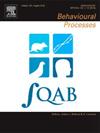Sounds in common: Time-frequency as the classification parameters for pulsed sounds produced by Delphinus delphis
Abstract
Sounds produced by dolphins can be grouped into tonal (whistles) and pulsed sounds (e.g., echolocation clicks and burst sounds). Clicks are broadband pulses temporarily spaced to allow echo processing between the sound source and the object. Echolocation is related mainly to prey detection and environmental recognition. Echolocation click trains tend to present a decreasing inter-click interval due to a continuous changing of the target's location when the animal approaches to capture the prey. In addition to foraging and feeding contexts, burst pulsed sounds have been associated with short social communication. Although echolocation clicks are relatively well documented, there is no consensus regarding the broad variety of the burst pulsed signals. The present study analyzed time-frequency characteristics by conducting a clustering and discrimination analysis to classify pulsed sounds. A total of 64 click trains were analyzed from short-beaked common dolphins recorded in the slope region of the western South Atlantic Ocean. Three analyses (time; frequency; and combined time-frequency parameters) were compared through k-means clustering and posterior cluster validation using Random forest analysis. The k-means clustering resulted in four clusters for all groups of analysis. The time parameters were the most accurate among the comparisons, with the first two-dimensional axis corresponding to 87 % (Dim1 = 70.2 % and Dim2 = 17.2 %). The random forest analysis showed that the time-frequency dataset was the best classification of pulsed sounds in D. delphis (Accuracy = 84.6 %; confidence interval CI = 65.1 %-95.6 %; p < 0.01). This result considers the animal an acoustical identity, emphasizing the importance of certain parameters that influence this identity and thus reflecting the energy-cost optimization for sound production.

 求助内容:
求助内容: 应助结果提醒方式:
应助结果提醒方式:


